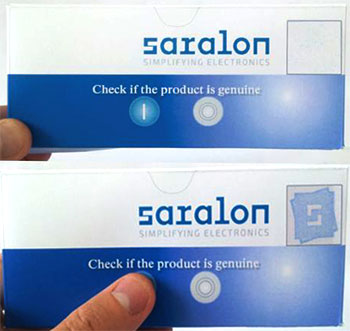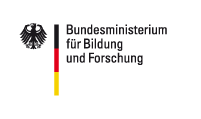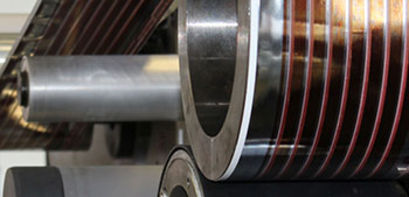Flexible electronic components are steadily developing further in the direction of print technology. However, the applications for printed electronics often focus on printed conductor paths combined with conventional elements in so-called hybrid technologies. The technological development of these hybrid technologies mainly focused on relatively expensive niche applications. To date, relatively little is known about the integration of several fully printed electronic components into completely flexible multifunctional systems. This was the focus of the German-Indian project that came to an end in July 2015 after three years.
During the course of this project, a large number of specific multifunctional systems were set up based on various individual components.
smart labels against product counterfeiting

Safety label from spin-off Saralon with printed EC display and printed battery. Top: Inactive display Bottom: Label activated, logo visible © M. Ali, Saralon
In the FLEXIPRIDE project, smart label applications were successfully integrated into more complex print products. All elements of these smart labels were manufactured using print technology. The technologies investigated in the project were integrated electronic components that can be printed easily and cheaply on conventional printers; these are very attractive for mass markets such as the packaging industry. Intelligent packaging applications such as active communications solutions (via smart boxes, displays, posters), electronically secured packaging or packaging solutions furnished with light or sound are much in demand by brand companies and the advertising industry. These early applications, i.e. safety labels designed to prevent product counterfeiting (so-called “smart labels”), were developed in cooperation with the spin-off company Saralon as part of the project. The company was founded by a former staff member at TU Chemnitz as a spin-off from the FLEXIPRIDE project.
Self-illuminating displays in development
Along with simple, non-illuminating displays, printed circuits for self-illuminating displays are also being investigated. In order to demonstrate the next possible stage of development for self-illuminating smart labels, a printed electroluminescent display was constructed and made to light up with a fully printed circuit.
Printed solar cells as an energy source
Research focused on flexible printed polymer solar cells for the integration of a flexible, scalable energy source into smart label applications. The possibility of manufacturing polymer solar cells on a commercial scale was demonstrated using a roll-to-roll printing process. The project results were presented to the public by printing 588 solar modules with a nominal voltage of 4 volts per module and displaying them in the form of a solar tree at the HANNOVER MESSE 2015.
German-Indian cooperation on the development of an inspection system
Along with the manufacturing technology, integration and circuit design of various electronic modules, the project also focused on quality control and inspection of the printed electronic components.
Visual error recognition processes and inhomogeneity analyses of printed solar cell layers were investigated in cooperation with the project partners. The modelling of the individual layers and the preliminary inspections took place at IIT Kanpur in India. Afterwards, these results flowed into the development of an inspection system by Chromasens GmbH. TU Chemnitz implemented the measurement system in a roll-to-roll laboratory printer and succeeded in measuring the printed solar cell layers. With this inspection system, it is now possible to recognise process divergences that could arise during solar cell production at an early stage and to take corrective action.
Additional project information
Contact
DLR Project Management Agency
European and International Cooperation
Cornelia Parisius
Tel.: +49 228 3821 1422
TU Chemnitz
Institut für Print- und Medientechnologie (pmTUC)
Prof. Dr. Arved Hübler
Tel.: +49 371 5312 3610










